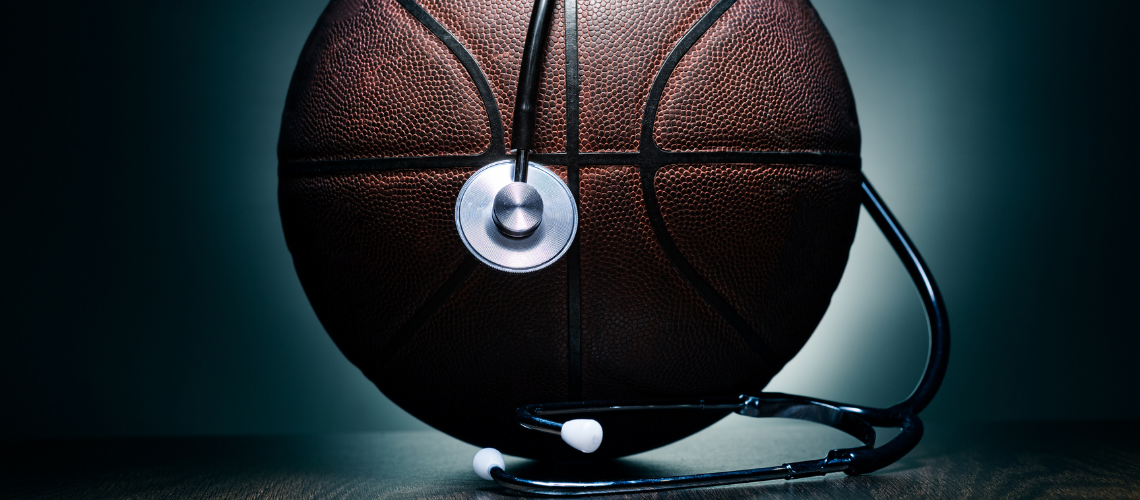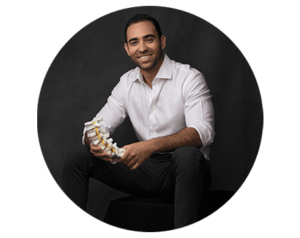Sports participation, recreational activities, and a generally active lifestyle are part and parcel of residing in sunny Miami. These pastimes are not just enjoyable, they benefit the human body and contribute to any health and wellness plan. However, if a patient isn’t careful, there can be a danger in seemingly innocuous sporting pursuits. According to Johns Hopkins, hospitals treat almost 2 million patients annually due to sports-related injuries. Injuries normally occur from jumping back in when a patient hasn’t been active, not warming up, overtraining, using equipment improperly, or purely by accident.
Common injuries include muscle sprains and strains, knee injuries, swollen muscles, ligament tears, achilles tendon ruptures, dislocated joints, fractures, rotator cuff injuries and concussions. In particular, men between the ages of 25 and 40 years of age are the most likely to get hurt from bicycling, basketball, football, baseball, softball or soccer. According to the Insurance Information Institute, Football and basketball are near the top of the list for men, while women in the same age range were more prone to get hurt from bicycling and softball.
In Miami, the following are the most common types of sports injuries:
- Soccer – Meniscus
- Mountain Biking – Hamstring Tear
- Kiteboarding – Rotator Cuff Injury
- Tennis – Tennis Elbow
- Golf – Tendonitis
Leon Anijar, MD, at his new South Beach, Miami location provides patients with a holistic approach to treating these common injuries and getting patients back on the field, court or the trail as soon as possible. The use of regenerative medicine as well as non-addictive pain management sets Dr. Anijar and his team apart. Backed by the most advanced technology and cutting-edge treatment programs, this total team approach to patient care results in quicker recovery no matter the age.
Torn Meniscus From Playing Soccer

A torn meniscus is a very common knee injury. It’s caused by any activity in which the knee is forcefully twisted or rotated – as in a soccer game. A torn meniscus is specifically a tear in the knee cartilage. The C-shaped meniscus absorbs shock while also moving lubricating fluid around the area. It has a rubbery texture and is comprised of collagen fibers.
During the course of 4 to 6 weeks, though pain and swelling may decrease, these symptoms can become somewhat chronic without treatment. In some instances, surgery is performed to remove or repair the torn piece of meniscus. However, more recently, stem cell treatment has been used to aid and speed healing while achieving superior quality tissue repair. According to the National Institute of Health, studies have demonstrated that this type of treatment appears to be safe and effective in meniscal repairs.
Stem cells, combined with Platelet Rich Plasma (PRP) are a non-surgical regenerative treatment that can stimulate natural healing, rebuild tissue and provide stability to the meniscus area. The cells are harvested from a patient’s own marrow and are used to create a natural healing patch.
Hamstring Tear From Mountain Biking

The term “hamstring” refers to a group of three muscles which run down the back of the thigh from hip to just below the knee. An injury to the hamstring injury is any strain or tear to these large muscles (or tendons). Injury – the most severe of which is a complete tear – usually happens during sudden, explosive movements, such as with mountain biking. Hamstring injuries are very painful and yet account for up to 29% of all lower extremity injuries across all sports. Additionally, the rate of re-injury is high – especially in the initial two weeks following a return to normal activity.
Regenerative treatment such as stem cell therapy has shown promising results in speeding recovery time in a non-invasive manner. Injecting a patient’s own stem cells into the injured muscle is used to promote self-repair as well as control pain and inflammation. Stem cell therapy aims to repair the tendon and regenerate healthier tissue so patients are able to return to normal activities and reduce any chance of re-injury.
Rotator Cuff Injury From Kite Boarding

The rotator cuff is comprised of four pieces of muscle working together. It serves to keep the shoulder moving in every direction – allowing arms to lift up and away from the body. A tear of any of these four muscles, or a torn tendon, or one that no longer fully attaches to the head of the humerus, can result from a sports injury such as kiteboarding. Over two million Americans will experience some type of rotator cuff injury annually. Despite improved surgical techniques, the healing rate for complete tears is unsatisfactory as it is difficult to restore the tissue between bone and tendon.
Stem cell and PRP injections are regenerative and non-invasive options that can help patients avoid surgery. These types of therapies not only minimize pain but aid in the healing process. In a ten-year study, patients who received stem cell injections reported 100% healing after six months, while only 67% of the group who did not receive stem cell injections reported the same. Ten years post-recovery, 87% of stem cell patients still had intact rotator cuffs, while only 44% of the non-stem cell group reported the same.
Tennis Elbow From Playing Tennis

Tennis elbow – also known as lateral epicondylitis – is inflammation or the micro-tearing of the tendons that join the forearm muscles to the outside of the elbow. It is a stress injury that occurs as the result of repetitive motions made by the wrist and arms and there are many other causes besides tennis. It’s a painful condition and tennis elbow is one of the most common causes of chronic arm pain.
Stem cell injections, combined with PRP can help to heal the tendons faster and in a less invasive manner than through surgical repair. A 2014 study showed that treatment of tennis elbow patients with single injection showed a significant improvement. Additionally, in the journal “The Physician and Sports Medicine” researchers compared steroid injections to PRP treatment to patients with Tennis Elbow and found that PRP appears to be more effective in relieving pain and improving function in the long-term (6 months to a year.)
Tendonitis Resulting From Golfing

A common injury for golfers in Fl orida is De Quervain’s Tendonitis – also known as DeQuervain’s tenosynovitis. An inflammation and injury to the two tendons at the base of the thumb close to the wrist. It is caused by forceful and repetitive thumb and wrist movements – such as in golfing.It is a painful condition that hurts when a patient turns their wrist, grips a golf club or makes a fist. Patients feel the pain in their wrist, it may also spread to the thumb or the forearm.
Though this injury results in inflammation and therefore anti-inflammatory treatments such as cortisone injections are a first line of treatment, there are drawbacks to steroids given their strong side-effects. Stem Cell Therapy may be beneficial. A recent study has shown that stem cells have been applied with success in order to augment tendon and ligament healing. Therefore stem cell therapy may be very beneficial for tendon injuries such as De Quervain’s Tendonitis.
Stem Cell therapy, in general, is a treatment for musculoskeletal disorders. Whether it’s degenerative joint and disc diseases or injuries of the tendon and ligament, stem cell therapy enhances the healing process and speeds up recovery time after a torn ligament or tendon injury. Dr. Anijar, along with Spine and Wellness Centers of America (SWCA), brings a multidisciplinary regenerative medicine approach so that each injured patient receives customized, comprehensive treatment plans that have been designed and personalized for their individual needs.
Stem cell therapies are less invasive and designed to help patients avoid surgery. They are performed in office on the same day and are safely composed of a patient’s own bone marrow. Stem cells are able to turn into whatever tissue is in need of repair such as collagen, bone, and cartilage.
Dr. Anijar and staff head up a state of the art facility design to treat each patient as an individual and get them back to playing the sports that they love in a quicker albeit incredibly healthful way.


